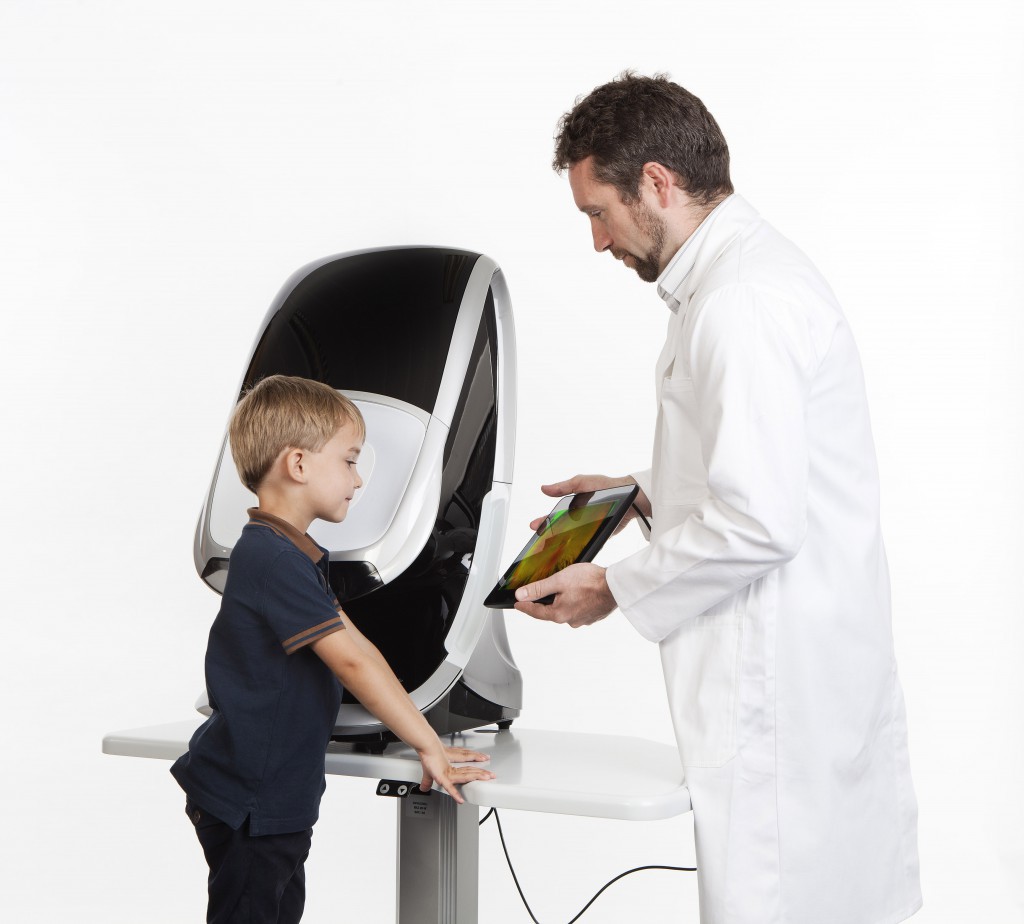
Make sure your child’s regular eye exams include optomap!
But annual eye exams aren’t just for the back-to-school crowd. Children under the age of six can also have vision difficulties. This is of particular concern, as undiagnosed vision difficulties in younger children can lead to developmental delays, affecting visual-motor and even cognitive functions. Along with the astigmatism, myopia and hyperopia, children 6 and under are also at risk for amblyopia, or “lazy eye.” Affecting 2 percent of children aged 6 to 72 months, if untreated, amblyopia can lead to permanent vision impairment or blindness. Strabismus, a physical misalignment of the eyes, affects two to four percent of children ages 6 to 72 months, can lead to amblyopia and — because of the condition’s physical appearance — it may also affect the child’s emotional health. Early diagnosis is important in the treatment of amblyopia and strabismus, and it’s one reason why national health authorities recommend that every child between the ages of 3 and 5 have a pediatric vision screening at least once.
But beyond eye health, children’s eye safety should be an equal concern to parents, grandparents, teachers, coaches and others who work with children. Eye protection for kids and adolescents can take many forms: age-appropriate toys, UV-blocking sunglasses during extended outdoor play, goggles for dips in chlorine-loaded swimming pools, and safety glasses for baseball, softball, and other sports involving objects whizzing through the air. These common-sense steps can reduce exposure to harmful UV rays, protect from irritating chemicals, and lower the risk of injury.
Our contribution to protecting the eye health of children began with our founder, Douglas Anderson and his goal to create an imaging technology that could detect the kind of retinal detachment that caused his son Leif to lose vision in one of his eyes. Although his son was having regular eye exams, routine exams were uncomfortable, especially for a child, which made it impossible for the doctor to conduct a complete exam and view the entire retina. Anderson set out to commercialize a patient-friendly retinal image product that encompassed a digital widefield image of the retina in a single capture. Almost 25 years later, Optos ultra-widefield retinal imaging continues to impact the diagnosis and treatment of ocular health, at every level.
Visit our website to locate a doctor in your area that uses optomap technology and make it a part of your back-to-school and ongoing eye-health checklist!